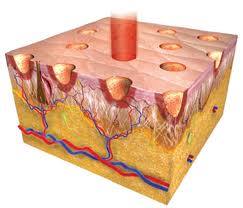The best way to treat surgical incisions that ultimately ends up with the most obscure scars is controversial. How a surgical incision heals and looks aesthetically is influenced by many variables such as the instrument used to make it, where on the body it is loacted, and the techniques used for wound closure. Many incisions go on to heal exquisitely well with the tincture of time alone.
But some wound closures are not favorable ones and may benefit by early scar treatment therapies. Then there is also the psychotherapy benefit of the patient doing something early in the healing process, taking an active role in the scar outcome. This has led to a plethora of topical scar creams and gels, most of which contains silicone fluid or silicone particles. The scientific benefits of their use remain far from scientifically proven but they are certainly harmless and usually relatively inexpensive.
More ‘high-tech’ therapies have been similarly applied to help modulate scar healing including laser and pulsed light therapies. There are no well tested scar treatment protocols but various practitioners use either pulsed dye laser or high intensity light (IPL/BBL) treatments as one option. Others use superficial or lower power fractional laser resurfacing treatments in the early healing period. No studies have ever been done that I am aware of that has directly compared these two scar therapy methods.
From a biologic standpoint the use of pulsed light therapies in early scar treatments makes good sense and is less likely to cause any adverse effects. Affecting the vascular elements and how the collagen is cross-linked theoretically could make the redness in the scar fade faster, decrease the risk of hyperpigmentation and help it soften sooner, particularly if it is prone to scar hypertrophy. In essence, it may expedite what the body naturally does through its scar maturation process. Such light-based treatments can begin early as soon as two or three weeks after surgery. Interestingly, but never talked about, is whether shortening this scar process may weaken its ultimate tensile strength attainment. Does making a scar look better sooner affect what its primary role is…that of holding the wound edges together? On the face, however, this is probably not a relevant issue.

What is the best early treatment for incisions/scars? Between topical, light-based and laser therapies is one better than the other or is there a good combination? The reality is that no one knows for sure and any claims otherwise are marketing/sales driven but not backed by good science. For a safe and cost-effective approach, topical scar methods are certainly harmless but probably minimally effective. Which one of the many topical scar products is better is open to debate. For a more aggressive early approach, I recommend pulsed light treatments starting at three weeks after surgery done once a week for one month. If a scar in the first few months appears problematic (beginning hypertrophy) then fractional laser treatments should be started.
Until we have more scientific studies evaluating these scar treatment methods, their use will have to be on theoretical science and clinical experience.
Dr. Barry Eppley
Indianapolis, Indiana


